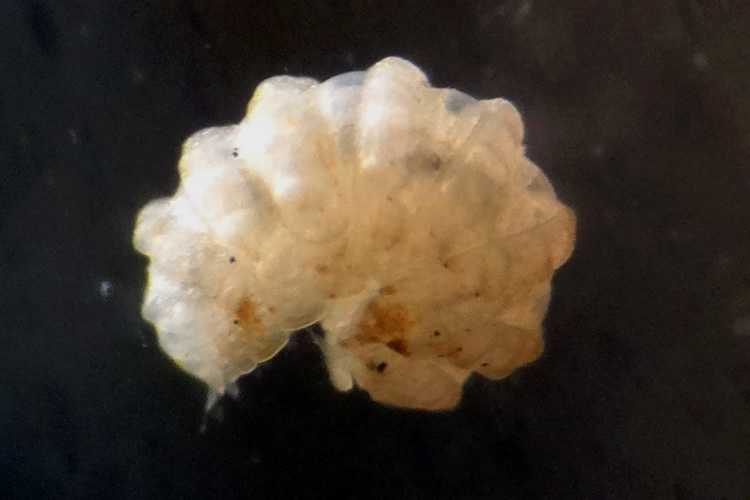Buddelundiella cataractae Verhoeff, 1930
Common name
Status:
- GB IUCN status: Least Concern
- GB rarity status: Nationally Rare
ID Difficulty
Identification
Buddelundiella cataractae is a distinctive pygmy woodlouse due to its small size (up to 3mm in length), its ability to roll into a ball and its exaggerated haplophthalmoid sculpturing. It can be mistaken for Haplophthalmus spp., but confusion is most likely with the tropical glasshouse species Reductoniscus costulatus.
Distribution
Although apparently very rare, it is very elusive and additional sites must await discovery. The majority of known sites are coastal, the majority in south Wales, but it is capable of surviving away from maritime influences (such as Oxford City - BISG newsletter 28, pg.1). It has not been recorded from Ireland. An updated distribution map is given in Gregory (2024) pg 30.
Habitat
It seems to favour sites with a high degree of disturbance, either synanthropic or natural, and the presence of damp, highly organic, friable soil. It can be found under stones and dead wood, often several centimetres down within the underlying substrate. It is usually associated with soil-dwelling trichoniscids, typically Haplophthalmus mengii (with which it may be overlooked) and Trichoniscus pygmaeus.
This summary is based on the detailed account in Gregory (2009), updated in Gregory (2024).
References
Gregory, S. (2009) Woodlice and Waterlice (Isopoda: Oniscidea & Asellota) in Britain and Ireland. Field Studies Council/Centre for Ecology & Hydrology.
Links
World List of Marine, Freshwater and Terrestrial Isopod Crustaceans: http://www.marinespecies.org/isopoda/aphia.php?p=taxdetails&id=259435







